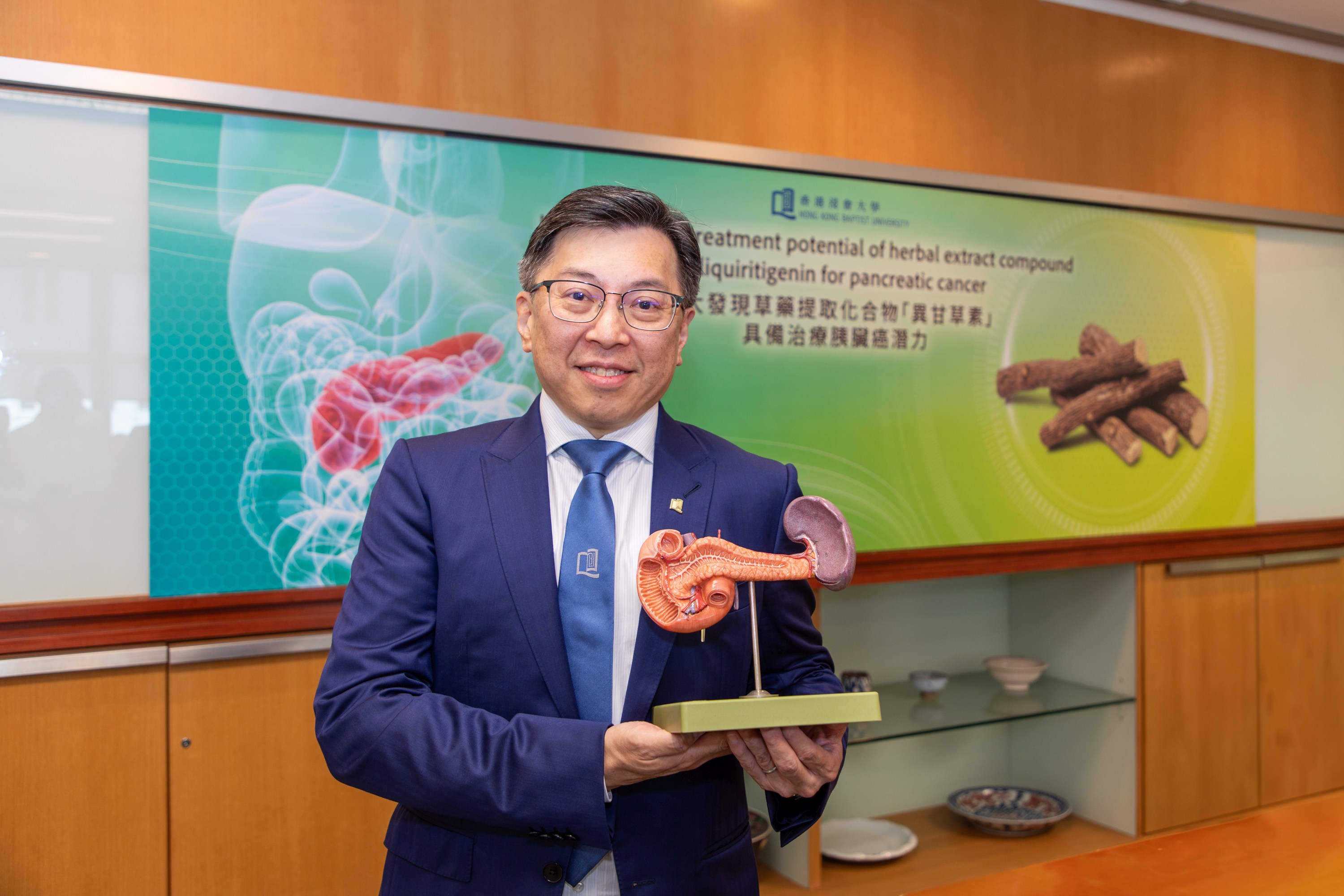
The research findings have been published in the international academic journal Phytomedicine and recently presented in the Annual Congress of the European Association for Cancer Research 2023 in Torino, Italy.
Pancreatic cancer as the “silent killer”
Pancreatic cancer is often called the “silent killer” as most patients experience little or no symptoms until it has advanced and spread. According to the Global Cancer Statistics 2020 released by the International Agency for Research on Cancer, the mortality-to-incidence ratio of pancreatic cancer is greater than 93%. It is the fourth leading cause of cancer deaths in Hong Kong.
Whipple (pancreaticoduodenectomy) operation is the only available curative treatment of pancreatic cancer. However, only 20% of patients are suitable for resection and the recurrence rate is high. In non-resectable cases and metastatic pancreatic cancer patients, the chemotherapeutic drug gemcitabine (GEM) remains the mainstream treatment. Nevertheless, GEM-based combination therapy exhibits profound chemoresistance with serious systemic toxicity.
Gancao extract identified as anticancer agent
In the search for alternative treatments for pancreatic cancer, a research team led by Dr Joshua Ko Ka-Shun, Associate Professor, Teaching and Research Division of the School of Chinese Medicine at HKBU, screened all the potential pancreatic cancer disease markers and the biological therapeutic activities of phytochemicals from the medicinal plant Glycyrrhiza glabra (licorice, or Gancao in Chinese) using network pharmacology.
Network pharmacology is an emerging discipline which systematically catalogue the molecular interactions of a drug molecule in a living cell using complex computations, and has become an important tool in botanical drug discovery. Using this approach, the team identified ISL as a potential anticancer agent for the treatment of pancreatic cancer.
With a series of cell experiments, the team demonstrated that ISL suppressed the growth and induced apoptosis (programmed cell death) of pancreatic cancer cells. In two human pancreatic cancer cell lines applied with 12.5 μM and 25 μM concentrations of ISL respectively, their cell survival rates were about 50% and 80% lower than the control cells with no ISL applied. The percentage of late stage apoptosis in the two cell lines was 11% and 13% respectively, compared to less than 5% in the control cells.
Inhibits cancer progression with fewer side effects
“ISL possesses a unique property of inhibiting pancreatic cancer progression through the blockade of autophagy, which is a natural process where the body’s cells clean out damaged or unnecessary components. The blockade of late-stage autophagy in our experiments results in cancer cell death,” said Dr Ko.
The research team further employed a mice tumor model to investigate the efficacy of ISL in inhibiting pancreatic cancer cell growth in vivo. The mice were divided into three groups with GEM (GEM group), ISL (ISL group) and no treatment agent (control group) applied. The ISL group was further divided into two sub-groups treated with 30mg/kg and 60mg/kg of ISL.
On the 21st day of the experiment, the tumor volumes of the control group and the GEM group were1000 mm3 and 400 mm3 respectively. The tumor volumes of the two ISL sub-groups treated with 30mg/kg and 60mg/kg of ISL were about 500 mm3 and 300 mm3 respectively. The results showed that ISL demonstrated treatment effects comparable to that of GEM. Meanwhile, compared with GEM, ISL showed fewer side effects in mice including neutropenia (drop in white blood cell count), anemia and body weight loss.
Enhances effects of chemotherapies
Current first-line chemotherapeutic drugs for pancreatic cancer, such as GEM and 5-fluorouracil (5-FU), are frequently associated with chemoresistance. It is because these drugs induce autophagy which favours the growth of cancer cells, and thus jeopardises their treatment effects.
To explore ISL’s potential in counteracting the chemoresistance of GEM and 5-FU, the research team set up experiments with pancreatic cancer cells treated with GEM or 5-FU alone, and GEM or 5-FU together with ISL. The growth inhibition rate of pancreatic cancer cells applied with GEM and ISL together is 18% higher than using GEM only, while the growth inhibition rate using 5-FU and ISL together is 30% higher than 5-FU only. The results showed that ISL can enhance the treatment effects of chemotherapeutic drugs by blocking autophagy, which is conducive to the death of cancer cells.
“The findings in this study open a new avenue for developing ISL as a novel autophagy inhibitor in the treatment of pancreatic cancer. We hope to collaborate with other research partners to further evaluate the effectiveness and potential clinical application of ISL in treating pancreatic cancer,” said Dr Ko.
Hashtag: #pancreaticcancer #isoliquiritigenin
The issuer is solely responsible for the content of this announcement.






